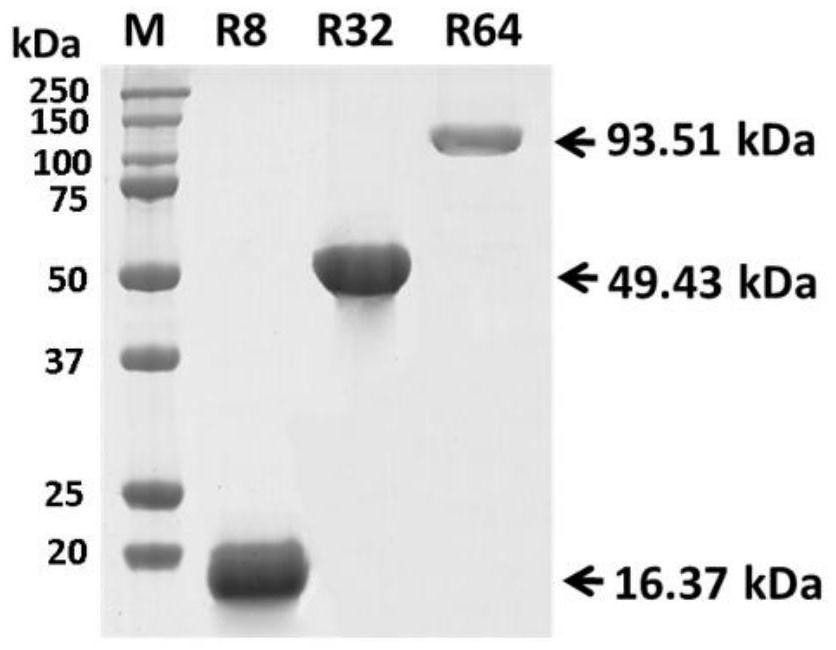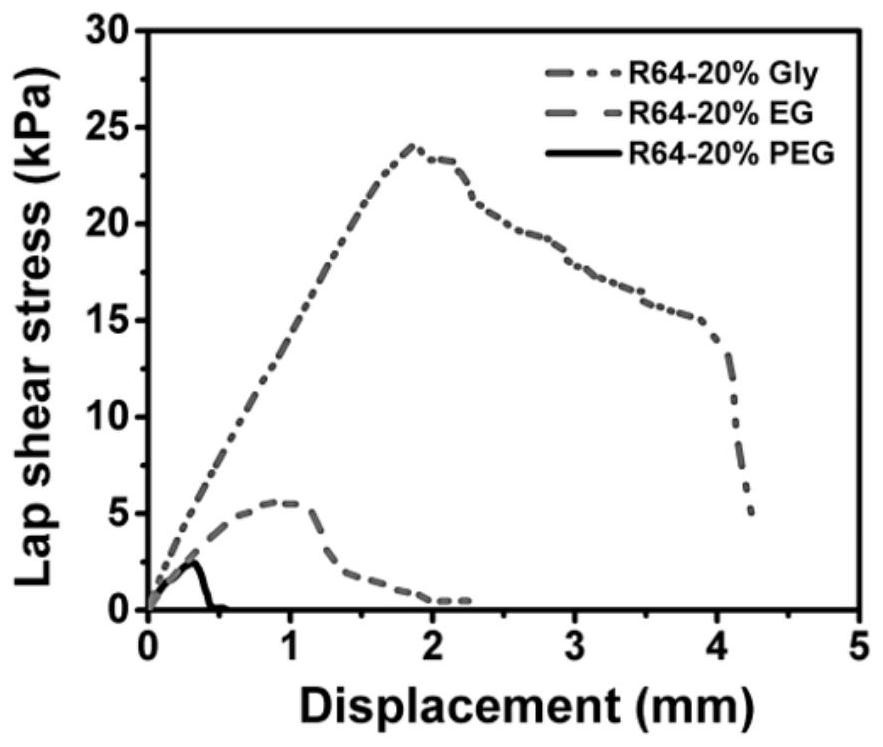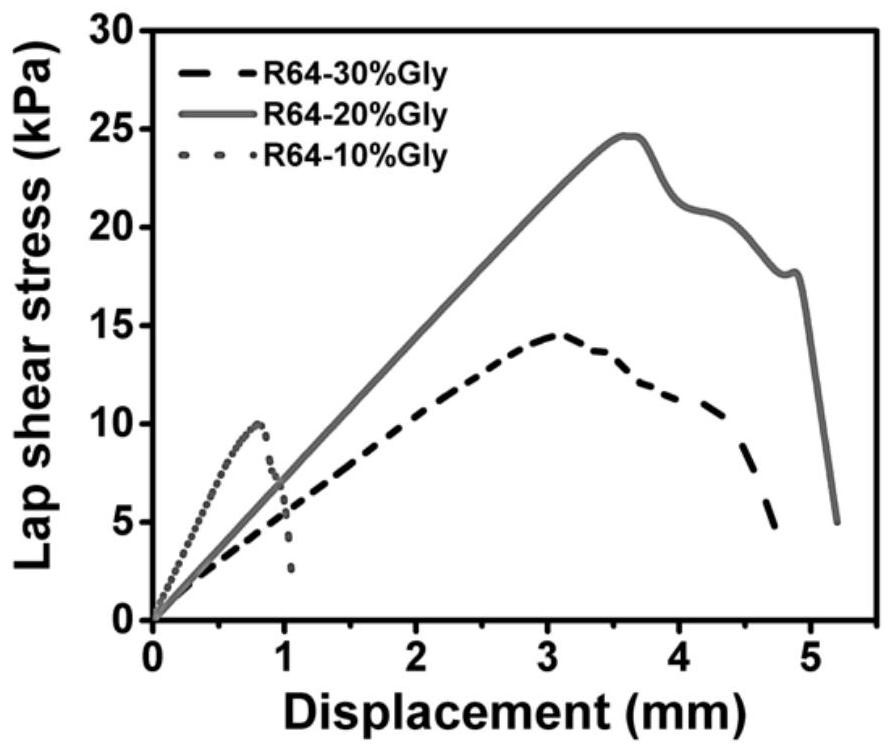Arthropod elastin-like adhesive conductive hydrogel and its preparation and application method
A technology of arthropod elastin and conductive hydrogel, which is applied in electromagnetic measuring devices, electric/magnetic solid deformation measurement, etc., can solve the problems of harsh production conditions, poor biocompatibility and degradability, and achieve high sensitivity, Improves ductility and stabilizes resistance changes
- Summary
- Abstract
- Description
- Claims
- Application Information
AI Technical Summary
Problems solved by technology
Method used
Image
Examples
Embodiment 1
[0045]Construction of the vector: In this example, the expression vector of the target protein was constructed, and the expression vector was introduced into Escherichia coli to achieve expression and production. The following specific operations were implemented: using restriction endonuclease and ligase to construct and produce the expression vector encoding 1- An expression vector of 32 GGRPSDSYGAPGGGN quadruplex (R4)x, where x represents any positive integer from 1 to 32. Then, different vectors were transformed into expression host cells respectively, and the strain was cultured at 37°C for 12 hours in 4 mL of LB medium containing ampicillin (0.1 mg / mL) until the OD600 was 1.8-2.0, and then transformed with a 2% inoculation amount. Put into 50mL R / 2 medium containing ampicillin, culture at 37°C for 7-8h until OD600 is 2-3, then transfer to 5L 2L R / 2 medium containing ampicillin with 10% inoculum size, Feed was controlled by dissolved oxygen, and the dissolved oxygen was s...
Embodiment 2
[0051] Acquisition of target protein: In this example, resuspend the bacteria obtained in Example 1 according to the ratio of 1 g of wet bacteria to 10 mL of low-concentration buffer; after high-pressure crushing, centrifuge at 12,000 rpm to obtain supernatant, which is washed with 0.45 μm Membrane filtration, equilibration buffer to equilibrate the Ni-Sepharose column and load the sample. After washing away non-specifically bound proteins with impurity removal buffer, the target protein is eluted with elution buffer. Concentrate the target protein to 10-20mg / mL with concentration tubes with a cut-off of 3kDa and 10kDa, freeze the concentrated protein solution in a -80°C refrigerator for 12 hours, and dry in a vacuum dryer for 48 hours.
[0052] The purified eluate was loaded on SDS-PAGE under reducing conditions, such as figure 1 shown. The band indicated by the arrow in the figure is the target protein (R4)x.
[0053] The equilibrium buffer refers to: an aqueous solution ...
Embodiment 3
[0057] Coupling of target protein to graphene: Add 1-(3-dimethylaminopropyl)-3-ethylcarbodiimide hydrochloride (EDC) to 100mM 2-[morpholine]ethanesulfonic acid buffer solution (pH6.0), the final concentration is 5mM, and graphene oxide is added, the final concentration is 2mg / mL; then N-hydroxysuccinimide sodium sulfonate (Sulo-NHS) is added to the mixture, the final concentration is 10mM and react at room temperature for 30 minutes. An equal volume of 100 mM phosphate (PBS) buffer was then added to adjust the pH to 7.5. (R4)x protein (10 mg / mL final concentration) was added to the graphene oxide solution, and the reaction was allowed to proceed at room temperature for 2 h. Subsequently, the graphene oxide-(R4) X The product is separated from excess EDC, EDC by-products and Sulo-NHS. The product was washed 5 times with deionized water and reduced with 5 mM ascorbic acid at 85 °C for 1 h. rGO-(R4) was then washed with deionized water X The product was lyophilized for 2 day...
PUM
| Property | Measurement | Unit |
|---|---|---|
| Sensitivity | aaaaa | aaaaa |
Abstract
Description
Claims
Application Information
 Login to View More
Login to View More - R&D
- Intellectual Property
- Life Sciences
- Materials
- Tech Scout
- Unparalleled Data Quality
- Higher Quality Content
- 60% Fewer Hallucinations
Browse by: Latest US Patents, China's latest patents, Technical Efficacy Thesaurus, Application Domain, Technology Topic, Popular Technical Reports.
© 2025 PatSnap. All rights reserved.Legal|Privacy policy|Modern Slavery Act Transparency Statement|Sitemap|About US| Contact US: help@patsnap.com



